We have not yet finished our study of the history of the Arian Controversy or the Arian Heresy, as it is known in church history. The Nicene Council marked two important “firsts.” One is that for the first time, the church found itself being dominated by the political leadership of the head of civil government.
But the bishops who gathered in council at Nicea were so preoccupied with solving the problem of who was the heretic that the issue of the relationship between church and state escaped their notice. Yet, this marked the beginning of what was to become an issue with which the world has had to contend ever since.
Secondly, this was the first time that civil punishment was exacted upon the heretics. Previously, synods of church officials removed from office those deemed heretics and, as in the case of Arius, banished him into exile. But that was church government. Now the civil government was exacting punishment. The original Nicene Creed also included the following anathema:
“And those who say there was a time when he [the Son] was not; and he was made out of nothing, or out of another substance or thing, or the Son of God is created, or changeable, or alterable;—they are condemned by the holy catholic and apostolic church.”
The word “catholic” there is a lower case “c”, and it simply referred to the universal church. The Roman church had not yet arrogated supremacy to itself, so there was no such thing at that time as what we today call the Roman Catholic church (“Catholic” with an upper case “c”).
Nearly all the bishops signed the Nicene Creed, even Eusebius, the church historian, whose majority party and semi-Arian position, was overruled by the emperor.
However, the other Eusebius, the Bishop of Nicomedia, while he, too, signed the creed, he did not sign the appended anathema. For this, he was deposed, and he presumably lost his nifty palace in a sheriff’s auction (or its equivalent in those days) because he was banished by the order of Emperor Constantine.
Two Egyptian bishops, plus Arius himself, of course, refused to sign the creed and for this they were banished to Illyria, which was located on the western side of the Balkan peninsula, roughly the area occupied by modern Albania.
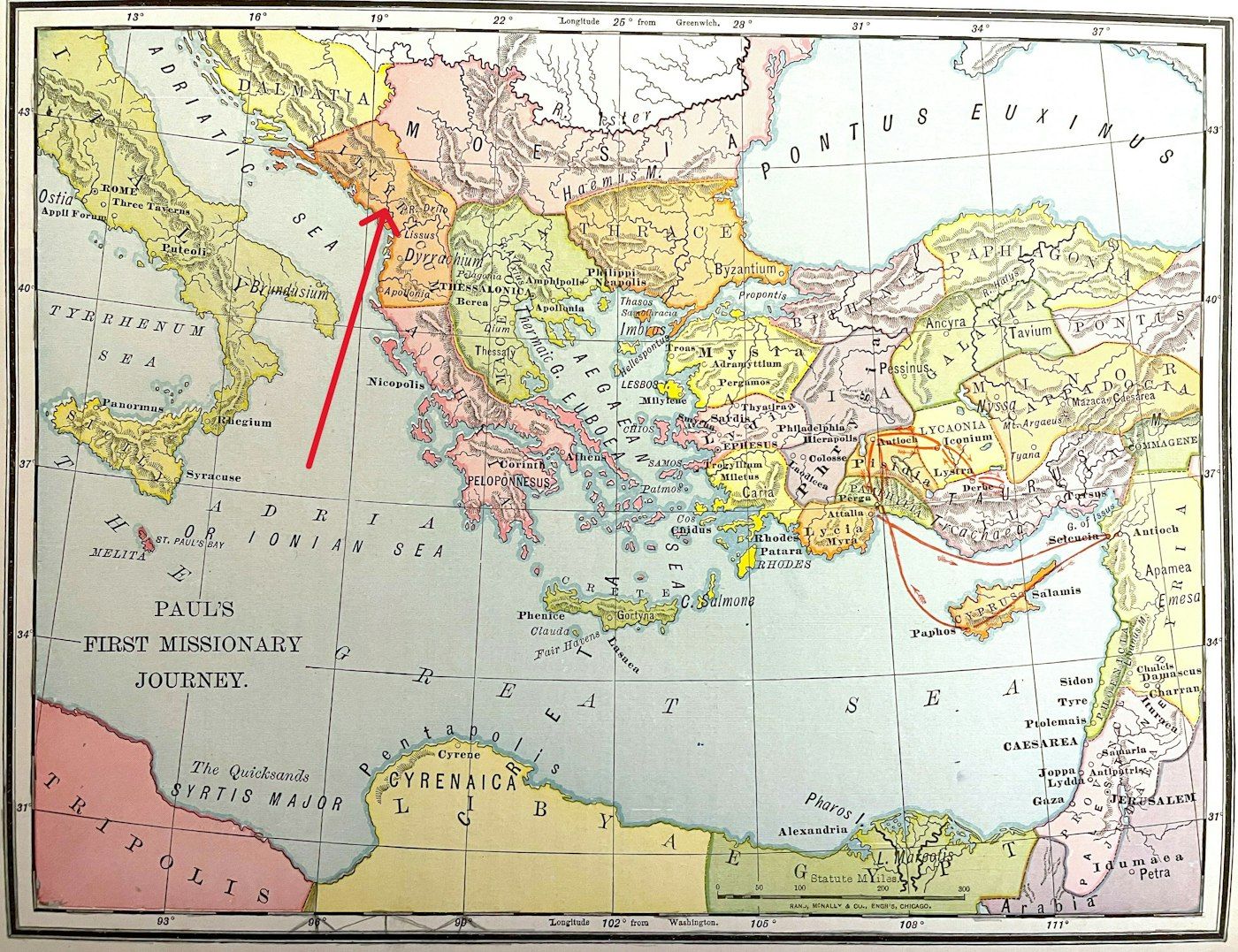
(Illyricum/Illryia province at tip of red arrow. Map from my personal library A Bible Atlas: A Manual of Biblical Geography and History, by Jesse Lyman Hurlbut, D.D., copyright 1910 & 1928; thus in public domain)
I stated that this marked the first time in church history that the civil government was not only in a dominant position over the church (except during the church’s infancy, of course, when the Roman state murdered and martyred untold numbers of Christians), but that it was also the first time that the state enforced punishment upon those deemed as heretics.
This opened the door of what was to become a very long and dark period of centuries where horrible tortures and deaths were inflicted upon those adjudged as heretics, and in some cases, upon those who were only accused of departing from the orthodox faith.
Although the word “orthodoxy” means “right thinking,” it is not always so. Sometimes, false doctrine becomes established as orthodoxy. Do you suppose that might have been one of the situations that God had in mind when he foretold the following?
Isaiah 5:20 Woe unto them that call evil good, and good evil; that put darkness for light, and light for darkness; that put bitter for sweet, and sweet for bitter!
When orthodoxy teaches the eternal burning hell doctrine, we contend that fits Isaiah’s prophecy. Arius was not only banished, but his books were burned, and his followers were labeled as enemies of Christianity.
Oh, I almost forgot. Remember when I mentioned that when we speak of the presbyters and bishops of the church of that era, that it was centuries before the Roman Catholic church demanded celibacy of its priests?
Well, the Council of Nicea was on the verge of making the same mistake way back then, and would have, except for an eloquent plea against the practice by a priest who had himself remained celibate all his life.
The Nicene Council really settled nothing—well, I shouldn’t say that. They did settle the day when “Easter” should be celebrated. But when I say that the Nicene Council really settled nothing, it is in reference to the Arian Controversy.
Because as soon as Constantine was dead, all hell broke out, so to speak. Well, let me back up—before he even died, Constantine had had a change of heart. This came about when his sister, Constantia, before her death, had commended to the care of her brother, a household priest friend of hers. The priest just happened to be an Arian. This Arian presbyter then succeeded in persuading Constantine that Arius had been wrongly condemned and that Arius did not differ from the Nicene bishops in anything important. (Wink, wink).
As a consequence, the emperor recalled Arius from exile in the year 330. But in order to make it look right with the public, Constantine told Arius to compose a confession of faith.
By this time, Arius had learned a thing or two about the political game, and so he drew up a statement of faith which appeared entirely orthodox and therefore it was enough to satisfy the emperor, but yet it contained subtle reservations which the emperor did not perceive.
However, some of the friends and supporters of Arius condemned him for “caving-in” and they subsequently separated from him. But Arius got what he wanted. Constantine rescinded the decrees against Arius and his followers.
Eusebius of Nicomedia, who you will recall, had also been banished, now came back with a big thirst for revenge. He and Arius had no bigger target than Athanasius, still the bishop of Alexandria, Egypt.
Athanasius adamantly refused to receive Arius back into communion with the church. His position was that since Arius had been openly condemned by a synod of bishops at Nicea, then it would require another synod to overturn that decree.
Despite even more pressure, Athanasius was even more unyielding in refusing to restore Arius to his former honors and ecclesiastical standing. Infuriated, Arius and Eusebius of Nicomedia went after him with all the political muscle they could bring to bear.
They persuaded Constantine to convene another council. This one took place in 335 in the eastern Mediterranean city of Tyre. Of course, it not only cleared Arius, but it turned into a show trial for Athanasius.

(City of Tyre at tip of red arrow. Map from my personal library A Bible Atlas: A Manual of Biblical Geography and History, by Jesse Lyman Hurlbut, D.D., copyright 1910 & 1928; thus in public domain)
He was found guilty on trumped-up charges of immorality and banished to Gaul. Constantine then summoned Arius to Constantinople and had him sign the Nicene Creed. By this time, the calendar had rolled over to the year 336. Arius didn’t seem to have a problem with the Nicene Creed this time—he obviously “saw the light”…uh, …not hardly!
He was falsely attesting to the Creed for the sake of his name and position. In return for the signature, Constantine then decreed that the bishop of Constantinople should have a public ceremony to receive and restore Arius back into communion with the church.
But on the day before the big event, Arius suddenly died! He was 80 years old. His friends immediately charged that he had been poisoned. His opponents, however, claimed that it was a clear sign of divine providence, showing the disfavor of God.
A year later, Constantine himself died, and the empire was divided among his three sons. In the west, the Nicene Creed was universally accepted. Two sons ruled in the west. Constantine II and Constans favored the orthodox position.
But in the east, Constantius, the second eldest son, was wholly Arian. And so from the 330’s to the Council of Constantinople in 381 A.D., the church was in great turmoil—no longer from external persecution, but from internal battles over heresy concerning the nature of Christ.
In the west, Constantine II recalled Athanasius from his first exile. He actually suffered banishment four more times, for his unbending stand on homo-ousios. In fact, Athanasius became so noted in his opposition to Arianism that the saying arose “Athanasius against the world.”
Because for a time, Arianism and semi-Arianism acquired supremacy and they did not hesitate to use the combined power of church and state to punish their opponents. And they were even worse than the orthodox had been.
So this whole period of some five decades is marred by bloodshed and ugly plots and palace intrigues. When the orthodox supporter, Constans, died in 350, Rome and all of Italy and a great part of the West came under the dominion of his brother, Constantius the Arian.
He then used all the power of the empire to suppress the orthodox. Back and forth it went over the decades. Council was held against council. Creed was established against creed. Anathemas were hurled against anathemas. “You are heretics!” “No, you are the heretics.” “No, you’re the heretics.”
Students of history will no doubt realize that a very similar situation occurred over a millennium later when the Protestants and the (Roman) Catholics made war against each other for centuries!
Ultimately, even though they had the ascendancy, the Arians fell apart from within because they themselves split into four or five differing viewpoints, whereupon it began all over again: “You are heretics!” “No, you are the heretics.” Several synods attempted to find compromise creeds for the various factions of Arianism, but all without success.
The eighteen or more creeds which the Arians, semi-Arians and other varieties of Arianism produced between the first ecumenical council at Nicea in 325, and second ecumenical council in 381, have proven to be trees with leaves but no fruit.
Meanwhile, even though the Eastern Roman Empire was officially and of a majority Arian, there always remained a minority of orthodox among them. Athanasius died in 373, but by that time the three Cappadocians were coming on the scene.
These were three bishops from the area of Cappadocia, which was the central and eastern area of Asia Minor (modern Turkey). They were Basil the Great, his younger brother, Gregory of Nyssa, and his good friend, Gregory of Nazianzus.
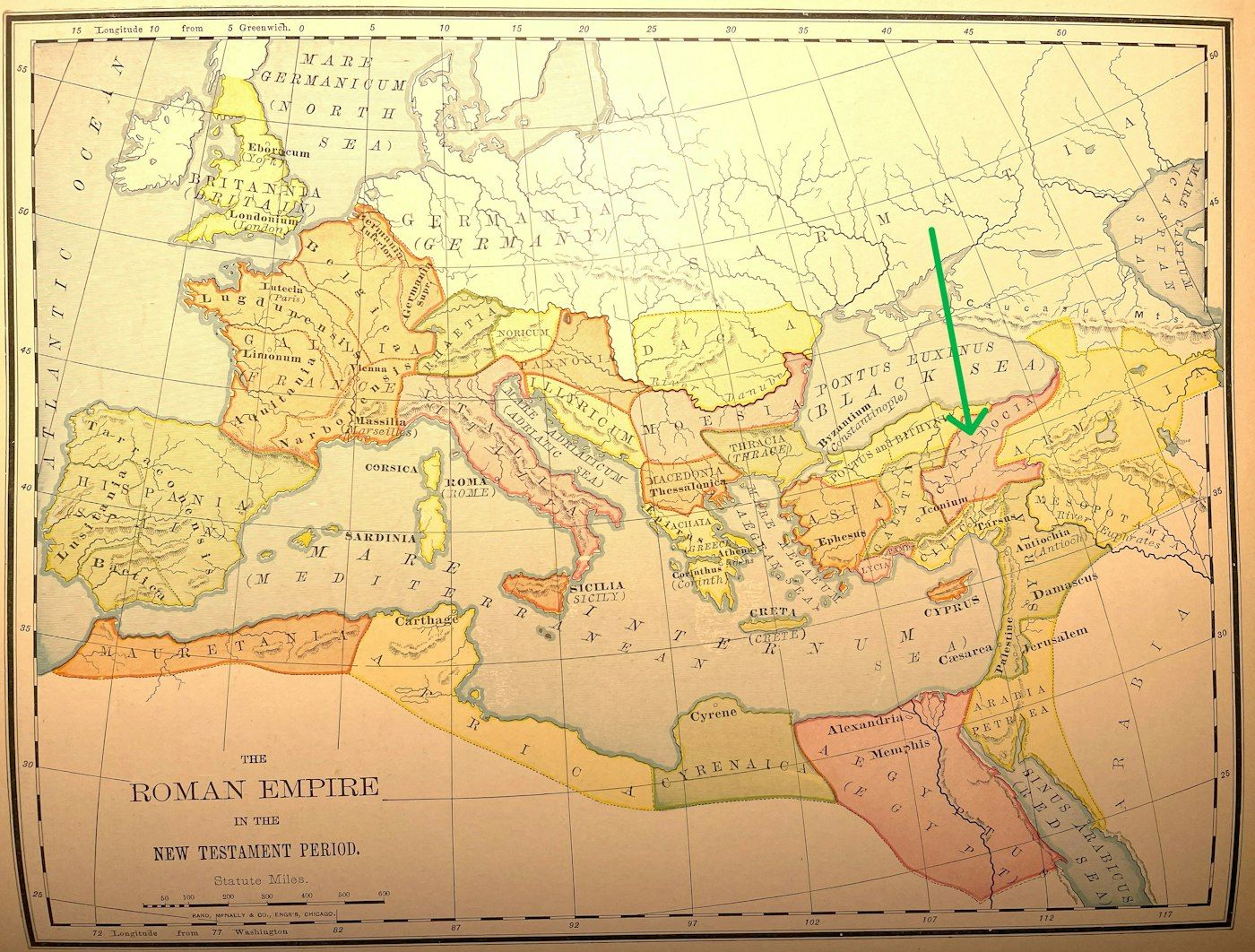
(Province of Cappadocia at tip of green arrow. Map from my personal library A Bible Atlas: A Manual of Biblical Geography and History, by Jesse Lyman Hurlbut, D.D., copyright 1910 & 1928; thus in public domain)
In the year 379, Gregory of Nazianzus was called to become archbishop in Constantinople. When he arrived, there was only one small congregation in the city which was not Arian. Within a short time however, that began to change as Gregory’s powerful and eloquent sermons on the deity of Christ won him the title “The Theologian.”
The three Cappadocians, with their sermons and theological writings, were responsible, more than any others, for the ultimate intellectual victory of the orthodox and of the revised Nicene Creed, which we will now discuss.
The Cappadocians had caught the attention of the Emperor Theodosius. While they were using the pen in theology, Theodosius used the pen in law and used the iron fist approach to again establish orthodoxy over the entire empire.
He deprived the Arians of all of their churches. He enacted very harsh laws against anyone professing Arianism. After Theodosius, Arianism no longer existed as an organized moving force in theology.
Theodosius convened a major church council in 381. It is called the Second Ecumenical Council, and it was held in Constantinople. Only 150 bishops were present of which none were from churches in the West.
Nevertheless, its importance was and is acknowledged by all. Its rulings (called canons) were seven in number, of which three are not accepted by the Roman Catholic church. But as regards Arianism and the Trinity doctrine, there was universal acceptance.
The major outcome was to reaffirm the Nicene Creed, not only putting the official hammer on Arianism one more time, but they expanded the Creed to include a more clear statement on the deity of the Holy Spirit.
During the previous five decades of turmoil, new heresies had arisen regarding the “Person” of the Holy Spirit…many variations—one of which claimed that the Holy Spirit is simply energy—a divinely-originated energy which suffuses the universe.
These heretics, the Pneumatamachi as they were called, denied that the Holy Spirit is a distinct Person, co-eternal with the Father and the Son. We won’t go into all that at this juncture—I have a separate, two-part lecture called The Deity of the Holy Spirit, which I have appended to the eight-CD lecture series entitled The Divinity of Christ. Thus the 10-part album includes the two CD lectures on the deity of the Holy Spirit. (See below for ordering.)
However, we will note that the only thing said about the Holy Spirit in the first Nicene Creed was “And we believe in the Holy Spirit.” To that was now appended that He is “the Lord, the Giver of Life, Who proceeds from the Father, With the Father and the Son he is worshipped and glorified.” You will note the language, that the Holy Spirit “proceeds from the Father.”
This is now where we come back to the so-called filioque clause that I mentioned earlier in this series of essays. In Latin, filio means son and que means and. You can see where this is going.
It focuses on the question: Does the Holy Spirit proceed only from the Father? Or does the Holy Spirit also proceed from the Son? Thus, “from the Father filioque and the Son.”
This tiny word/phrase became the great dividing point. In fact, it was the immediate cause of the great schism (The proper pronunciation of that word is sizm, not skizm, by the way.) between the Roman Catholic church and the Eastern Orthodox traditions.
Tertullian and Ambrose both taught that the Holy Spirit proceeds from the Father and the Son, although He is not subordinate to either, but is their co-equal. With this, Augustine concurred. The working out of this doctrine allowed the doctrine of the Trinity to be formulated pretty much as we have it today.
The filioque clause was added to the Nicene Creed at the Synod of Toledo in 447 A.D.
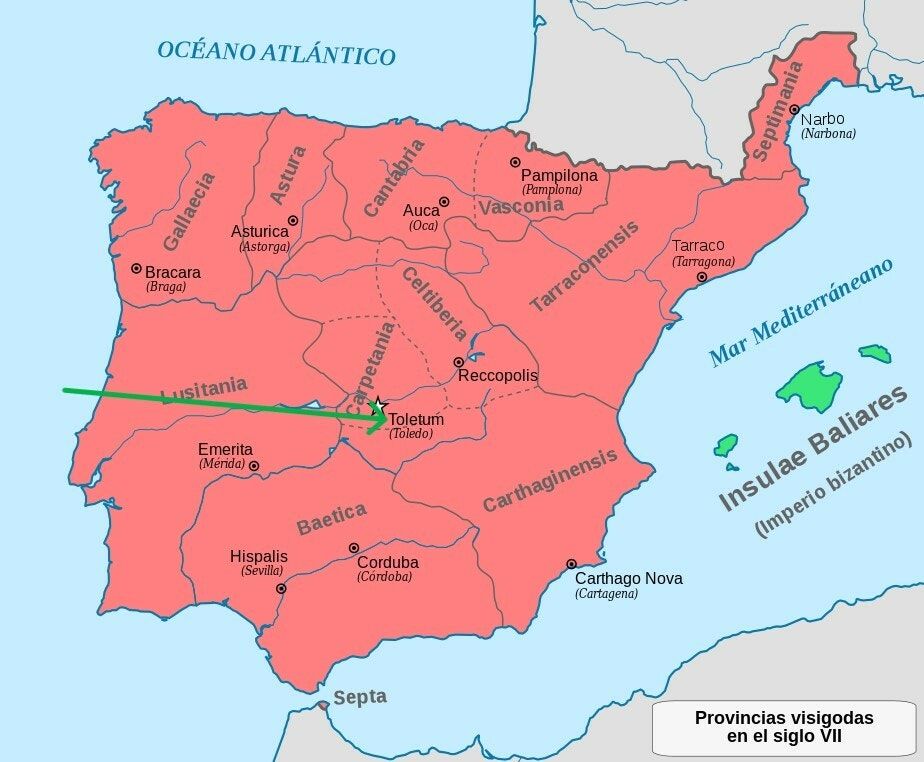
Although this was the first official occurrence of the filioque in a creed, it would not be until after 1000 A.D. that it would be officially endorsed by the Roman Church.
In 1054 A.D., it was one of the major reasons for the Great Schism. You may have heard that the Roman church’s previous boss, Pope Benedict, made some overtures to the Greek Orthodox, to try to heal the rift back in early 2007. The current pope, Francis, is following his predecessor’s lead.
Back to Arianism now. As I mentioned, the Council of Constantinople in 381 was the last gasp of Arianism as an organized theological force. This does not mean, however, that it disappeared from history and has never been seen again. Not at all.
First of all, the decrees of the Roman Emperor Theodosius stopped at the border of the Roman Empire. Just over the border were tribes whom western historians have called “barbarians.”
The root meaning of that word is simply aliens or strangers. Unfortunately, it has taken on the added meaning of savage, brutal and uncivilized. Sometimes, that might be the case, but in the case of the barbarians who overran the Roman Empire, they were no more savage and uncivilized than most of the emperors.
In any event, when Arius was exiled from Egypt to Asia Minor, this in fact allowed his teachings to spread further north and east across the empire boundary and into the lands of the so-called barbarians. People from the former Parthian Empire.
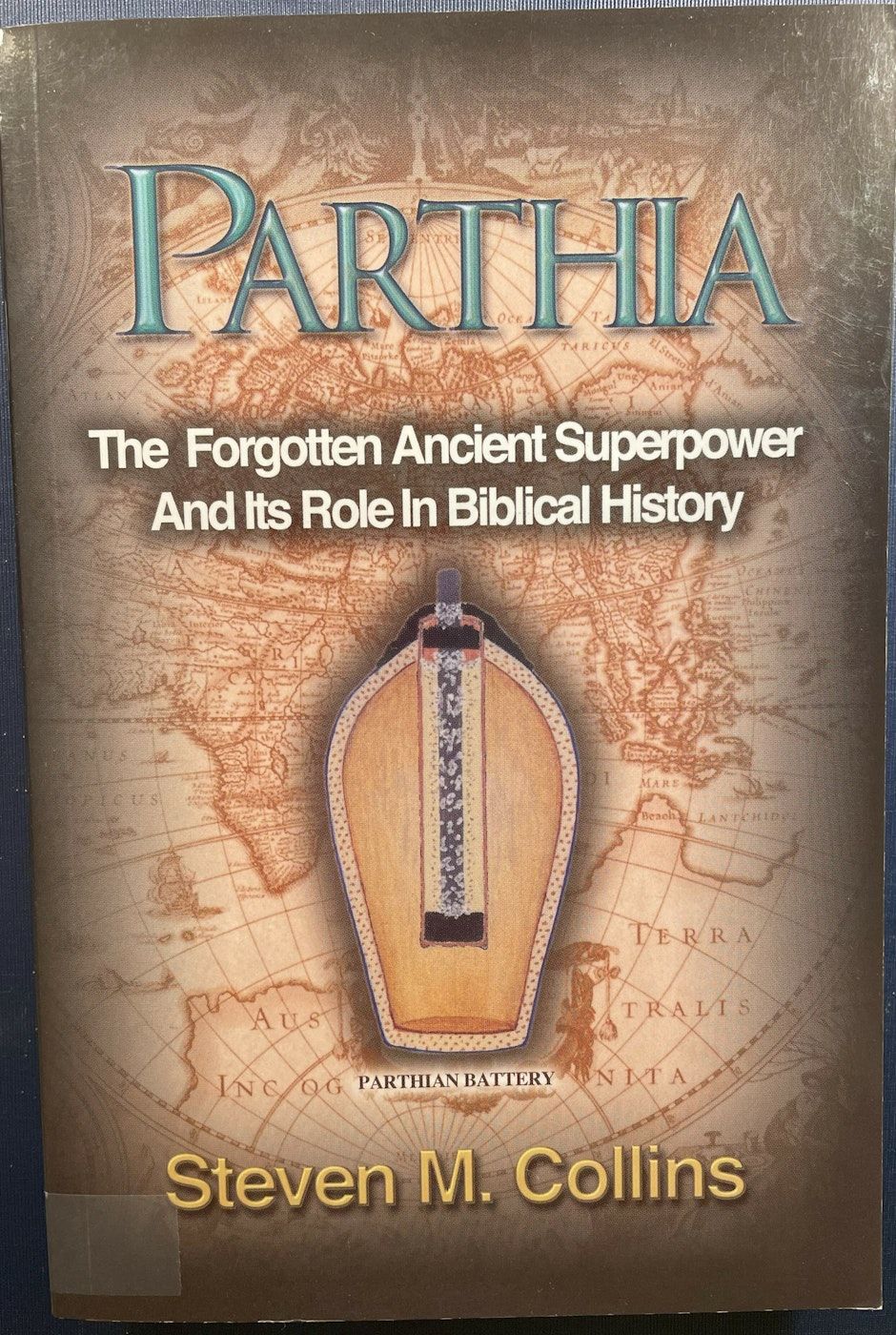
If you have read Steven Collins’ wonderful book called Parthia, then you know that those people were primarily of the lost tribes of Israel. Parthia was the third book in a series. Then in his final book of the quartet series, Israel’s Tribes Today, Collins shows the migrations of those tribes under various names as they came into and across Europe. (See ordering information below.)

Along the way, they accepted Christianity, but with Arianism being the first brand they came across, they obviously became Arian Christians. For example, among the Gothic tribes, there were the Ostrogoths and the Visigoths, or the Eastern Goths and the Western Goths.
In 310, a man named Ulfilas was born in the region of the lower Danube. He became the bishop of the Visigoths, and the translator of the Scriptures into the Gothic tongue. His name means “little wolf,” and so if you remember the tribal emblems of Israel, you know that the wolf was the emblem of the tribe of Benjamin.
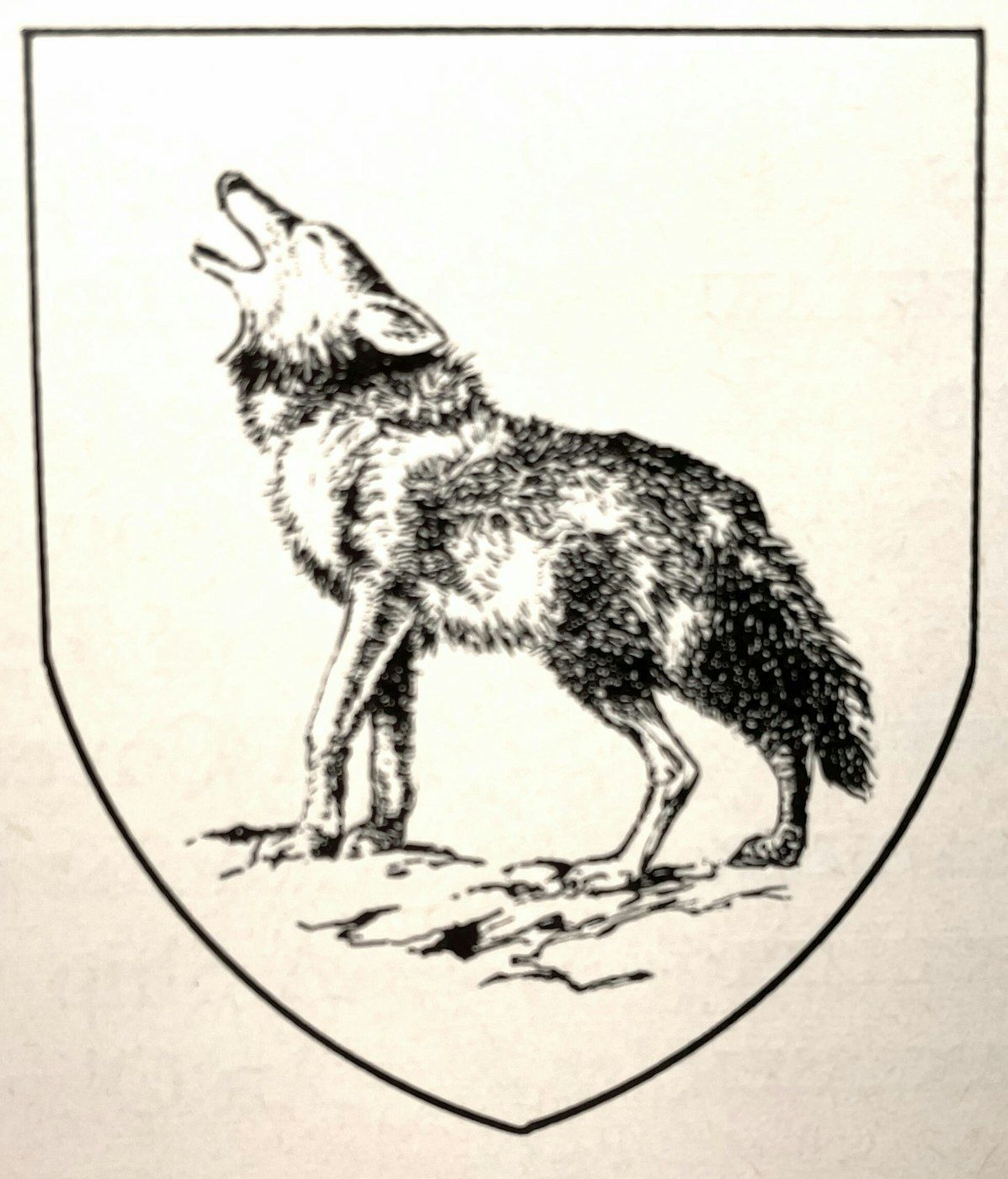
Therefore, some have speculated that Bishop Ulfilas was from the tribe of Benjamin. In any event, although Arianism was stamped out in the Roman Empire by Theodosius, Arianism remained among the tribes—whom we now know were Israelite clans and tribes, migrating under different names—it remained with them for about two centuries longer.
The Ostrogoths remained Arians until 553; the Visigoths until a second synod of Toledo in 589. The Suevi people in Spain were Arians until 560. The mighty Vandals had conquered North Africa in 429 where they greatly persecuted the orthodox. They, too though, finally came around to orthodoxy in 530.
The Burgundians—who later got into the wine business (chuckle, chuckle)—held onto Arianism until they were swallowed up and incorporated into the Frankish Empire. In Italy, the Lombards were probably the last to convert, holding on until the middle of the seventh century. Looking with the hindsight of centuries of history now, we can see the fulfillment of Christ’s own words in…
Matthew 10:34 Think not that I am come to send peace on earth: I came not to send peace, but a sword.
Good men on all sides—all professing to follow Christ—were unable to disagree amicably. All men have clay feet. All men are fallible. In this case, their vices of pride, arrogance, self-righteousness, envy, jealousy, and many more, prevented them from finding a way to ascertain truth in whatever the issue. And is this not still the case today? It certainly is.
Of this whole sad period, we can agree with the judgment of the 17th century church historian, Dr. Walch, who wrote in his Historie der Ketzereien, which means History of Heresies or History of Heretics, I am not sure which, but he wrote: [underlining emphasis mine—JWB]
“There was a total want of moderation throughout: everywhere the mistaken notion reigned, that it is right to exercise control over the consciences of others; everywhere private matters were treated as public affairs of the church; everywhere the authority of ecclesiastical councils was misused; and still more, that of civil magistrates; everywhere, therefore, a persecuting spirit was cherished and maintained.
“In particular, we believe that these faults commenced on the side of the orthodox; that other bishops too hastily became linked in with Alexander; ….
“But the Arians were guilty of still greater offences. Arius was in fault for so zealously endeavoring to create a party; but Eusebius of Nicomedia was, in our opinion, a real fire brand, who set the whole in a flame; and the suspicion that pride and love of distinction led him to defend Arius, and produced that obstinacy in supporting the side he took, appears to us well founded.
“In short—this history very forcibly inculcates the necessity of uniting true benevolence to men, with our zeal for the truth, and the avoiding of all personal animosities, by presenting to us so many lamentable occurrences and so very unhappy consequences, arising from the neglect of these Christian duties.”
As we have stated, Arianism as an organized movement died out after Emperor Theodosius, but it has arisen many times in the centuries since, under new names and with a minor modification or two.
In the 1500’s, Calvin had Michael Servetus burned at the stake for opposing the doctrine of the Trinity. Servetus had not founded any school, but his execution caused an Italian named Lelio Sozzini (Socinus) to turn his attention to controversy over the Trinity.
His writings were not made public during his life, but through his nephew they came to form the basis of what is known as Socinianism. To them, Christ was but a man, albeit a man who lived a life of exemplary obedience and who exhibited divine wisdom. Because of that, they say, Christ was rewarded with resurrection and a type of delegated or secondary divinity; certainly not in any sense equal with the Father.
Socinianism first arose in Poland, and had some strength in Holland, but it was in England where it bore most fruit. Moreover, some Socinians were Anabaptists, whose anti-Trinitarian beliefs had also spread to England. Under the reign of Elizabeth I, so-called “Arian Baptists” were burned at the stake in 1575.
Under King James I, two Englishmen, Bartholomew Legate and Edward Wightman, holding similar views, have the distinction of being the last Englishmen burned for their faith, insofar as I am aware. That occurred in 1612, a year after the first edition of the King James Version of the Bible.
With the era of civil war in England under Oliver Cromwell, the ground was ripe for all kinds of controversy and thus we see in the 1600s the development of English Unitarianism. You might be surprised to learn that the noted Puritan poet, John Milton (author of Paradise Lost), who died in 1674, leaned towards Arianism in his later years.
The eighteenth century saw both Socinianism and Unitarianism becoming more tolerated. In 1773, a minister by the name of Theophilus Lindsey (d. 1808) founded a Unitarian church in London.
The eighteenth century also saw the prominence of Rationalistic philosophy, which had its effect in religion. This led to a further strengthening of the anti-Trinitarian position, for the simple reason, at least in my mind, that Rationalism is all about Reason, and the mystery of the Trinity is not something that can be dissected and fully explained by man’s reason.
Hence, many concluded that if we cannot make total sense of how three Persons can exist in one God, and all the other ramifications of the Trinity, then we shall refuse to believe it. Which I find quite amusing, and yet sad, of course. Because if you have to understand everything before you believe it, then there is no place for faith. For faith is believing and trusting when we cannot put all the pieces together ourselves.
I could go on to delineate the rise of Unitarianism in America in the 18th century, but I shall forego that. These initial essays have had the purpose of setting the stage for a much larger train of essays. I wanted readers to have some acquaintance with the historical background of the Arian controversy before we actually began to examine the Scriptures themselves on this very vital and fundamental doctrine. (Series to be continued.)
END
The Divinity of Christ and the Holy Spirit: 10 CDs in SKM album # A-124: $37 ppd.
 The Divinity of Christ, part 4—The Arian Controversy, part 2
The Divinity of Christ, part 4—The Arian Controversy, part 2
 What’s on Juan’s Mind Today? Weekend Bonus - SG Anon
What’s on Juan’s Mind Today? Weekend Bonus - SG Anon